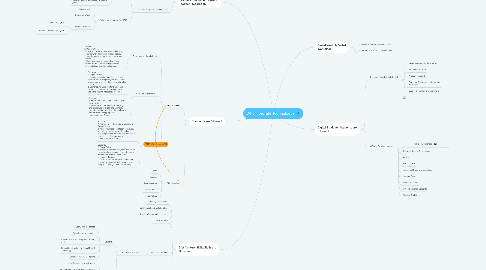
1. Teachers Should Be Different: Teacher Preparation
1.1. Model appropriate technology use
1.2. Should have model of technology use in PTE
1.3. Universal Design for Learning (UDL)
1.3.1. 3 Principles
1.3.1.1. Multiple Means of Representation (What)
1.3.1.2. Multiple Means of Engagement (Why)
1.3.1.3. Multiple Means of Action and Expression (How)
1.3.2. Why is tech important to UDL?
1.3.2.1. Assistive Tech
1.3.2.2. Accessibility Tech
1.3.2.3. Online Resources
1.3.2.3.1. TechMatrix
1.3.2.3.2. Common Sense Media
2. Standards are Different
2.1. ISTE Standards
2.1.1. Ethics: Copyright & Fair Use
2.1.1.1. Students 2. Digital Citizen b. Engage in positive, safe, legal and ethical behavior when using tech, including social interactions online or when using networked devices. c. Demonstrate an understanding of and respect for the rights and obligations of using and sharing intellectual property.
2.1.2. Safe Use of the Internet
2.1.2.1. Students 2. Digital Citizen b. Engage in positive, safe, legal and ethical behavior when using tech, including social interactions online or when using networked devices. c. Demonstrate an understanding of and respect for the rights and obligations of using and sharing intellectual property.
2.1.2.2. Teachers 4. Promote & Model Digital Citizenship & Responsibility a. Advocate, model, and teach safe, legal, and ethical use of digital info and tech, including respect for copyright, intellectual property and the appropriate documentation of sources.
2.1.3. Cyberbullying
2.1.3.1. Teachers 4. Promote & Model Digital Citizenship & Responsibility a. Advocate, model, and teach safe, legal, and ethical use of digital info and tech, including respect for copyright, intellectual property and the appropriate documentation of sources.
2.1.3.2. Students 2. Digital Citizen b. Engage in positive, safe, legal and ethical behavior when using tech, including social interactions online or when using networked devices. c. Demonstrate an understanding of and respect for the rights and obligations of using and sharing intellectual property.
2.2. Ohio Standards
2.2.1. Math
2.2.2. Science
2.2.3. Language Arts
2.2.4. Social Studies
2.2.5. Technology
3. 21st Century Skills: Skills are Different
3.1. Creativity & Innovation
3.2. Communication & Collaboration
3.3. Research & Information Literacy
3.4. Critical Thinking
3.5. Nonlinear Thinking
3.5.1. Benefits of Multimedia
3.5.1.1. Student
3.5.1.1.1. Stimulates the senses
3.5.1.1.2. Promotes Active Learning
3.5.1.1.3. Provides Practice in Using 21st Century Skills
3.5.1.1.4. Offers Opportunities for Ethical Use of Technology
3.5.1.1.5. Enhances Nonlinear Thinking
3.5.1.2. Teacher
3.5.1.2.1. Helps Communicate Instruction
3.5.1.2.2. Provides Practice in Facilitating Learning
3.5.1.2.3. Offers Opportunities to Differentiate Instruction
3.6. Visual Literacy & Visual Thinking
3.7. Spatial Thinking
3.8. Digital-Age Reflection
4. Global World & Global Workplace
4.1. Increased global competition for jobs
4.2. Increased pace of technology change
5. Digital Students: Students are Different
5.1. Characteristics of digital students
5.1.1. Never been without the internet
5.1.2. Multimedia inclined
5.1.3. Always connected
5.1.4. Gathering & processing information differently
5.1.5. Used to a stimulating environment
5.2. Different Types of Learners
5.2.1. Multiple Intelligences
5.2.2. Culture, Ethnicity, & Languages
5.2.3. Autism
5.2.4. ADD & ADHD
5.2.5. Intellectual & Learning Disabilities
5.2.6. Learning Styles
5.2.7. At-Risk Students
5.2.8. Gifted & Talented Students
5.2.9. Physical Disabilities
